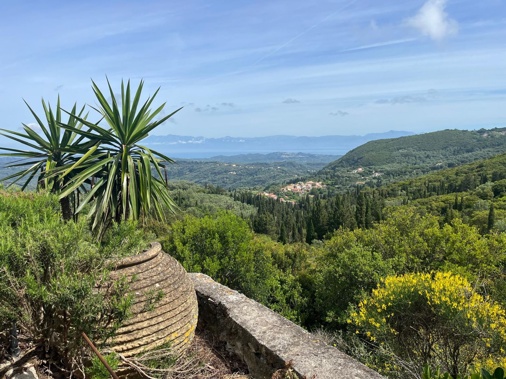
It is the greenest of Greece’s islands, lush and verdant with emerald mountains and breathlessly blue waters lapping rocky coves and sandy bays. This northeastern outpost of Greece lies across the Ionian Sea from Italy’s heel, while Albania is just 3kms away. Corfu has long enticed conquerors, as much as holidaymakers. British and French influences can be seen in Corfu’s atmospheric Old Town – however, it’s obvious that the Venetians, who stayed around for 400 years, exerted and left behind the greatest legacy. Their calling card is everywhere, with an alluring mix of neoclassical villas, Venetian palazzo and pastel-painted hill towns.
Corfu’s lush countryside beckons like an impressionist painting. Time-honoured farmhouses and cottages are draped in bougainvillea, wisteria, jacaranda and jasmine. The higher you climb, the stirring vistas of sea and sky continue to captivate. Many visitors to Corfu arrive by ship and it’s the old fortress walls that cut a striking figure, rising up from the rippling azure waters. Corfu's entire population once lived within the walls of the Old Fortress which was built by the Venetians.
The British modified the fortifications to stamp their own mark, like the Church of St. George, built to look like an ancient Doric temple, overlooking Garitsa Bay. Before the cruise crowds disgorge from their ships, cross the moat to the 14th-century Old Fortress and head up the Tower of the Land. Drink in the grand views of the watercolour patchwork of terracotta roof-tiled neoclassical buildings bathed in morning light, fringed by the glittering Adriatic Sea. Spot the two winged lions of St Mark, the Tower of the Sea, the British barracks and the church of St George. James Bond’s For Your Eyes Only was shot almost entirely on Corfu. If the Old Fortress looks familiar, one of the scenes features Bond pushing the Mercedes of his enemy off a cliff, by the fortress.
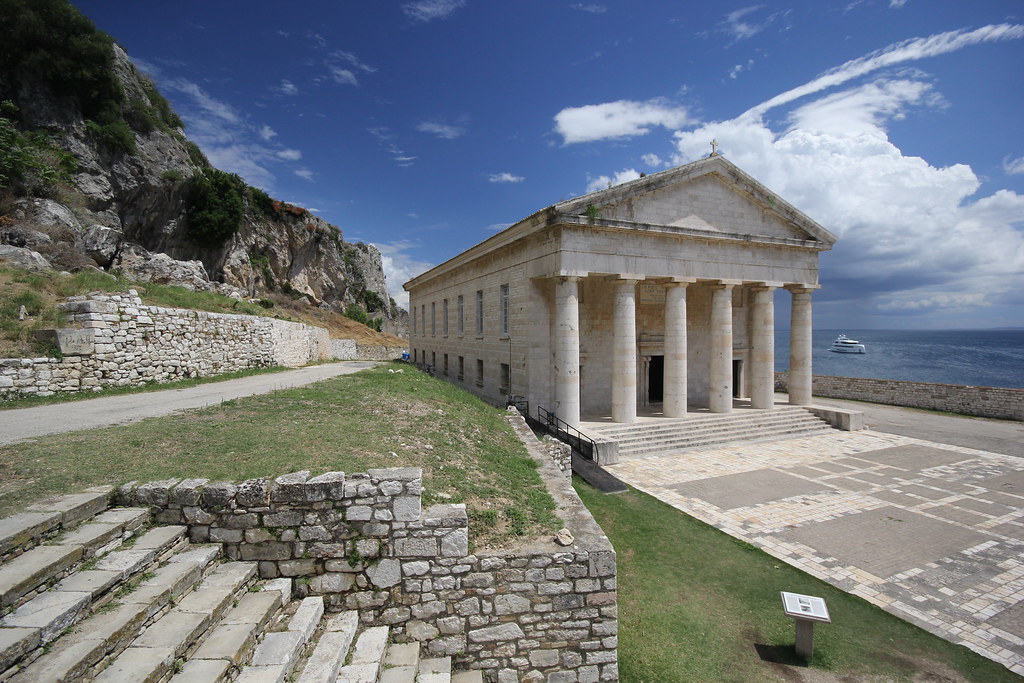 Doric Temple in Old Fortress. Photo / Supplied
Doric Temple in Old Fortress. Photo / Supplied
Although it was bombed during the Italian and Nazi occupation in World War II, Corfu Old Town remains one of the most charming in all of Greece. Start your exploratory of the World Heritage-protected Old Town on Spianada (Esplanade) Square, Greece’s largest public square. This huge, open parade ground and park is just west of the Old Fortress. Venetian villas and Georgian houses fringe the square as does the famous arcaded building called the Liston. It was built by the French under Napoléon and was meant to resemble the Rue du Rivoli in Paris. On a Sunday, don’t be surprised to see cricket matches staged on the square’s cricket pitch. It’s a cherished hangover from British rule. Crowning Spianada is a statue of Ioannis Kapodistrias, a Corfu resident and the first president of modern Greece. Kapodistrias was also, unfortunately, the first Greek president to be assassinated.
Beyond the sprawling and leafy square, delve into the Old Town, a jumble of Byzantine and Venetian-style buildings in ochre and rose-painted hues, more buzzy and dynamic than most Greek towns. One of the most enchanting experiences is to yourself in the Campiello. This is the medieval quarter, an atmospheric labyrinth of narrow, winding alleys called kantounia, along with steep stairways and secluded little squares. Stop for a leisurely coffee or a delicious kumquat liqueur, made with the celebrated local "golden orange."
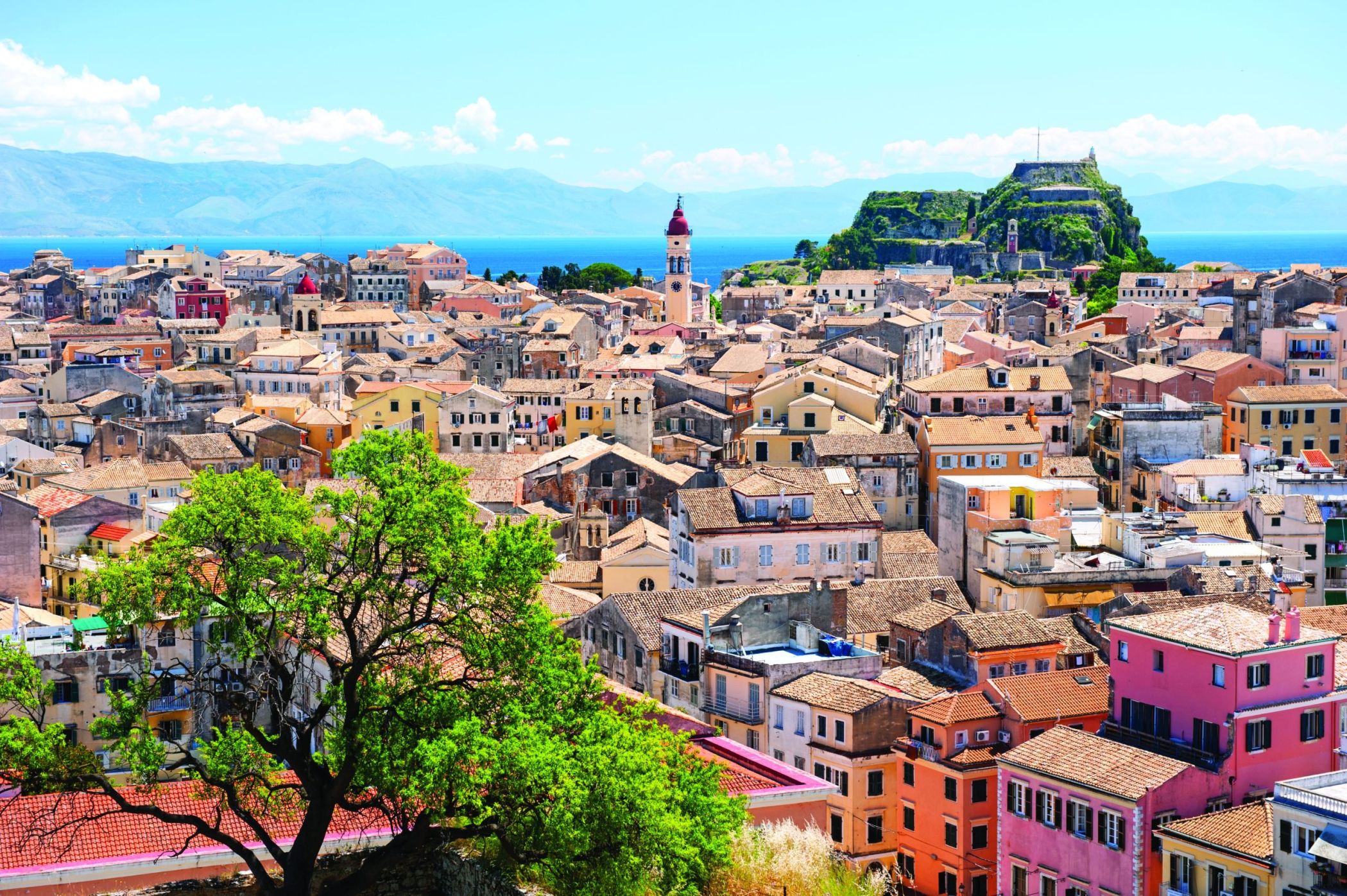 Colourful Corfu Old Town. Photo / Supplied
Colourful Corfu Old Town. Photo / Supplied
When you think of Greece, olive groves and citrus spring to mind, but the kumquat is quintessential Corfu. The tiny egg-shaped fruit found its way from China to Corfu sometime in the 18th century. The island has the perfect climate for growing Kumquats and the fruit has become a Corfu staple over time. You can buy Kumquat cream liqueur and a vast range of kumquat products, like their delicious candied and glazed kumquats, in every souvenir shop on the island.
Within the Campiello, groaning laundry lines connect balconied Venetian palazzi engraved with the original occupant's coat of arms to neoclassical 19th-century buildings constructed by the British. Small cobbled squares with central wells, watched over by old churches, add to the quiet, mysterious, and utterly bewitching urban space. You're almost certain to get lose your bearings, but the area is small enough that eventually you'll come out on one of Corfu Town's major streets, or on the sea wall.
Landmark sights to help you re-set your compass include the Church of St. Spyridon. Built in 1596, this church is the tallest on the island, thanks to its distinctive red-domed bell tower, and it's filled with silver treasures. The air is thick with incense and the relics of Corfu’s patron saint are housed here, contained in a silver casket. Spyridon wasn’t a Corfiot but a shepherd from Cyprus, who became a bishop before his death in 350AD.
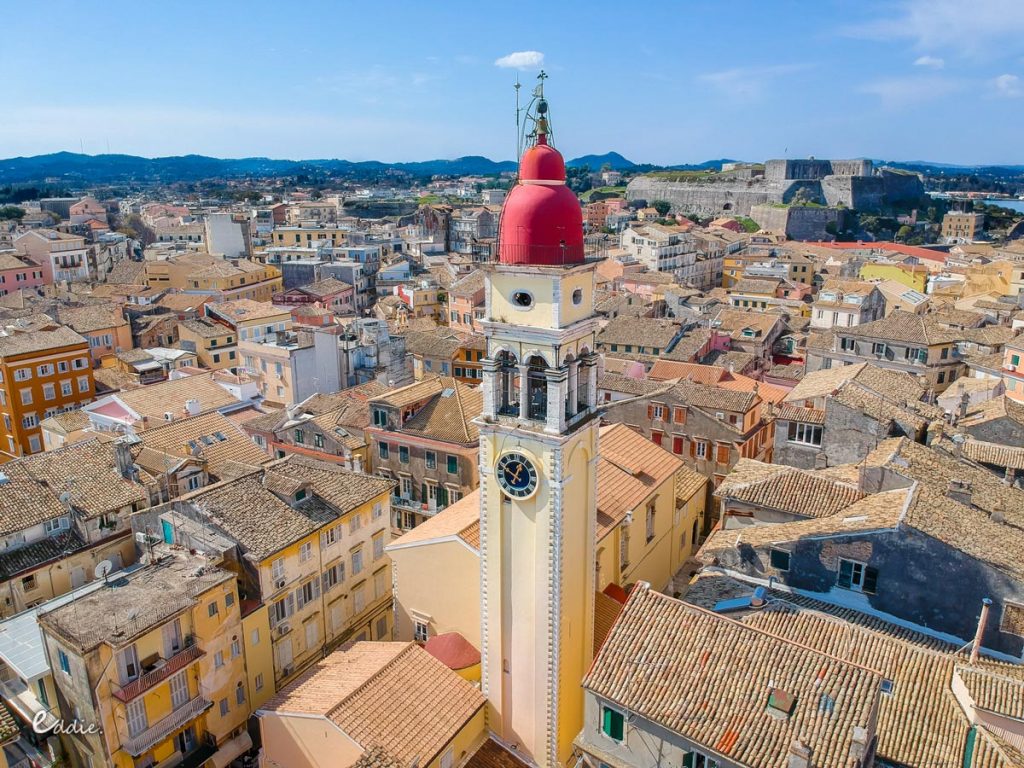 St Spyridon Church. Photo / Supplied
St Spyridon Church. Photo / Supplied
His miracles are said to have saved the island four times: once from famine, twice from the plague, and once from the Ottoman Turks. During World War II, a bomb fell on the church, but remarkably didn't explode. Maybe these events explain why it seems every other man on Corfu is named Spiros. Agiou Spyridonos, the street in front of the church, is crammed with shops selling religious trinkets, including the holy oil Greeks call miro.
I happened to be in town for Orthodox Easter and if you’re after an indelible cultural experience, Easter in Corfu is extravagant. A week of sober reflection is followed by the exuberant clang of church bells and clay pots thrown from balconies and smashing on the alleys’ cobblestones below. This event symbolises the expulsion of evil and renewal. Just be careful not to have a falling pot crash on head in those lanes – it does happen! A thunderous cannonade from the fort adds some heavy percussion to the sublime music of the island’s 18 philharmonic orchestras, creating a triumphant, celebratory atmosphere in honour of life over death.
Corfiot cuisine has been heavily influenced by Greece and Italy. A typical Corfiot dish such as pastitsado, is essentially a rich beef and tomato stew, typically served with pasta. Another Corfiot staple is sofrito, a melt-in-the-mouth braised veal infused with garlic and vinegar.
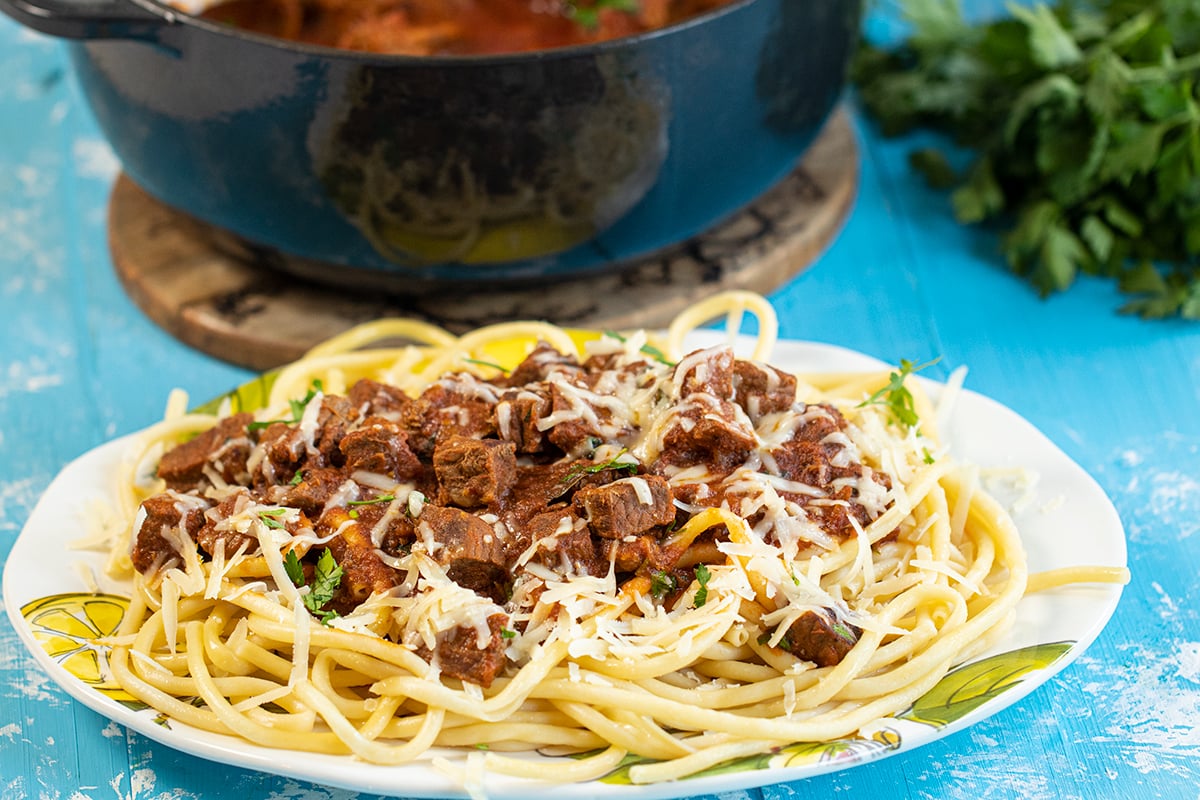 Pastitsado in Corfu. Photo / Supplied
Pastitsado in Corfu. Photo / Supplied
Fish plays a central role in the local diet. Local specialities include savoro, a spicy sauce made with olive oil, vinegar, garlic, rosemary, raisins and bay leaves in which sailors would preserve their fish for long journeys — another Venetian legacy. Stakofisi is wind-dried cod, which captures the salt in the air as it dries. The cod is then sautéed with onion and red pepper before stewed in sweetened tomato sauce.
If you’re a fan of eggplant, try pastrokio eggplant. The eggplant is fried up with cheese, pork, salami, sliced boiled eggs, then baked in the oven topped by tomato sauce. Not to be missed is tsigareli, a delicious and very local way of serving green vegetables such as cabbage or spinach using lots of herbs and spices including paprika, dill, fennel and cayenne pepper. And for dessert? Try Sikomaida. The rounded sweet patty is actually fig paste, chopped almonds and walnuts plus pepper and a few other Corfiot ingredients, mashed up and then wrapped in walnut leaves.
Further afield, a big crowd-puller is Achilleion Palace. It was built for Hapsburg Empress Elisabeth of Austria, also known as Sissi, in 1890, so tourists flock to this palace to see the statues and gardens dedicated to the Greek hero Achilles. It is where she retreated to mourn the tragic loss of her only son, Crown Prince Rudolf of Austria. The summer palace was built as her refuge (it also featured in For Your Eyes Only as the casino).
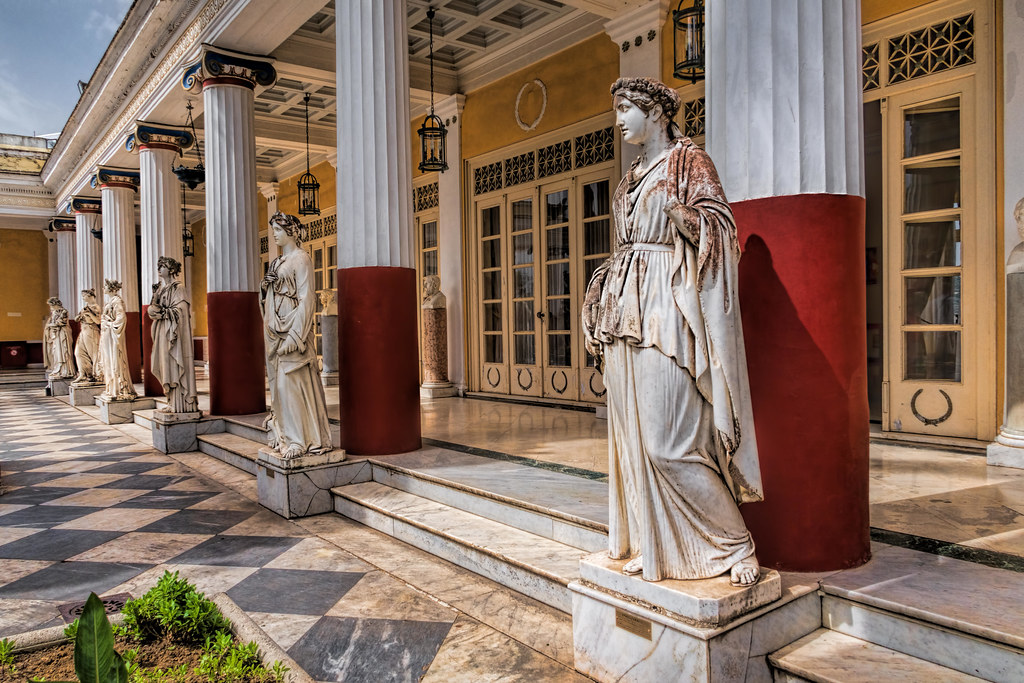 Achilleion Palace. Photo / Supplied
Achilleion Palace. Photo / Supplied
But it’s the serene sandy beaches, lost-in-time villages and tranquil hillside trails that elevate Corfu’s show-stopping appeal as a great escape from the bustling crowds. The island is studded with unforgettable bays flanked by stunning sandstone formations and translucent waters. The western coast is particularly photogenic. Your first destination should be Paleokastritsa, a chic waterfront town backed by forested mountains and dramatic cliffs studded with olive, pine, cypress and fir trees. The west-facing orientation sets the stage for long evenings, perfect sunsets and plenty of cocktails. From Paleokastritsa there are small water ferries to some of the impressive beaches around the coast, as well as to the Instagram-famous La Grotta cliff bar.
The island groans with postcard-perfect churches and monasteries. A star specimen is Theotokos Monastery, built on Paleokastritsa’s highest peak. The lookout point here captures staggering views of the town’s beaches and the densely-vegetated bluffs that plunge down to a turquoise-shaded sea. Absorb the serenity of the monastery and its tiny church housing rare icons, founded in the 13th century and dedicated to the Virgin Mary. It sure is a blessed pocket of the world.
Explore the world with the trusted name in travel insurance, Cover-More Travel Insurance, which has you covered with added safeguards, over and above the typical travel cover, for the likes of medical treatment. In addition to single-trip cover, multi-trip annual cover is another great option, wherever you want to go. Check out the full range of protections and tailor the level of cover to your requirements. Cover-More’s 24 hour global assistance centre is just a phone call away. https://www.covermore.co.nz
Mike Yardley is our resident traveller on Jack Tame Saturday Mornings.
Take your Radio, Podcasts and Music with you









